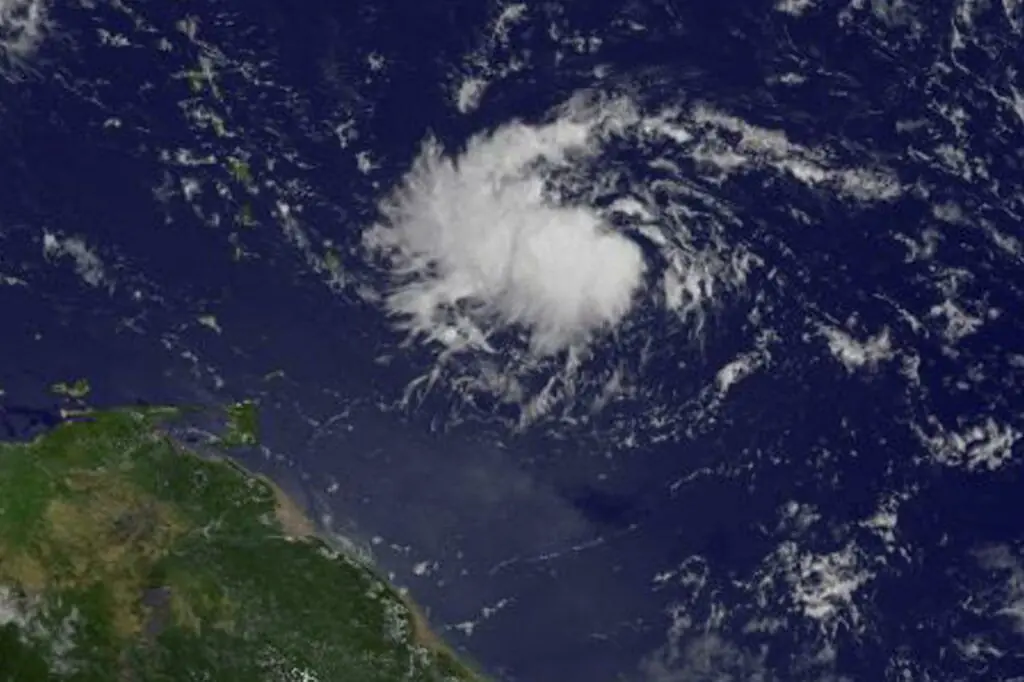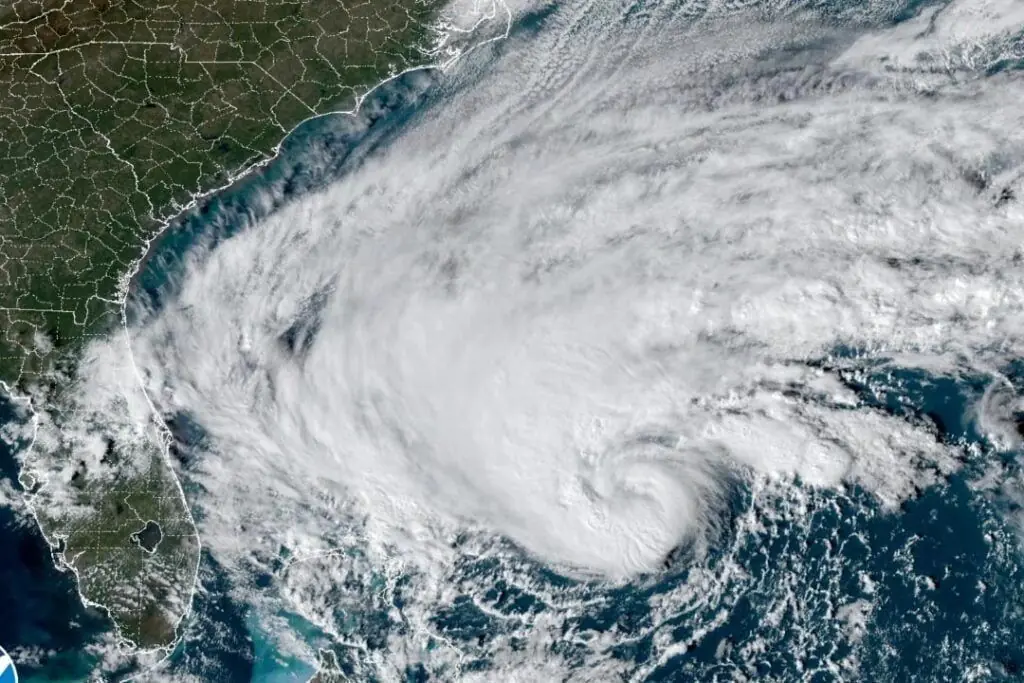Mère Nature possède des forces à la fois impressionnantes et terrifiantes, parmi lesquelles se trouvent les cyclones tropicaux. Ces puissants systèmes de tempêtes, allant des dépressions tropicales aux ouragans dévastateurs, ont le potentiel de faire des ravages dans les communautés côtières.
Les cyclones tropicaux sont de grands systèmes de tempête en rotation qui se forment au-dessus des eaux océaniques chaudes dans les régions tropicales. Ils se caractérisent par une faible pression atmosphérique, des vents violents et de fortes précipitations. Selon l'endroit où ils se trouvent, ils sont appelés ouragans (Atlantique et Pacifique Est), typhons (Pacifique Ouest), ou simplement cyclones (Océan Indien et Pacifique Sud). Ces tempêtes peuvent causer d'immenses dégâts aux communautés côtières en raison des inondations, des vents violents et des ondes de tempête.
Dans cet article de blog, nous approfondirons les distinctions entre les ouragans, les tempêtes tropicales et les dépressions tropicales, mettant en lumière ces phénomènes météorologiques et leurs impacts potentiels.
Infographie
Nous avons distillé les informations ci-dessous dans une infographie facile à comprendre pour nos abonnés. Pour des raisons de performances, une image de qualité inférieure est affichée sur cette page. Pour enregistrer l'image en taille réelle sur votre ordinateur, cliquez sur le bouton « Télécharger » sous l'infographie.
Ondes tropicales : Le précurseur des cyclones tropicaux
Avant d'examiner les différences entre les ouragans, les tempêtes tropicales et les dépressions tropicales, il est essentiel de comprendre les ondes tropicales, qui sont souvent les précurseurs de ces phénomènes météorologiques plus intenses.
Les vagues tropicales, également connues sous le nom de perturbation tropicale, sont des amas de nuages et d'orages qui se forment sous les tropiques dans les eaux océaniques chaudes (généralement au-dessus de 80F) et se déplacent d'est en ouest, poussés par les alizés. Ces perturbations se produisent souvent au-dessus de l’océan Atlantique, prenant leur origine au large des côtes africaines, près de l’équateur, et se propageant vers l’ouest en direction des Caraïbes, de l’Amérique centrale ou des États-Unis.
Bien que les vagues tropicales puissent produire de fortes précipitations et des rafales de vent, elles ne possèdent pas la circulation fermée et la structure organisée des cyclones tropicaux. Cependant, elles servent de "germe" aux cyclones tropicaux, en fournissant l'énergie et l'humidité nécessaires à la formation d'une dépression tropicale. Dans certains cas, les ondes tropicales peuvent s'intensifier et se transformer en dépressions tropicales, qui peuvent ensuite évoluer en tempêtes tropicales et en ouragans. Les météorologues surveillent de près ces perturbations, car elles peuvent fournir des indications précoces sur le développement potentiel d'un cyclone tropical.
Dépression tropicale : Le stade initial

Une dépression tropicale est le stade initial d'un cyclone tropical, avec des vents de 38 miles par heure (mph) ou moins. Ces systèmes météorologiques se forment lorsqu'un groupe d'orages converge au-dessus des eaux océaniques chaudes, créant une zone de basse pression avec une circulation fermée des vents. Bien que les dépressions tropicales puissent provoquer de fortes pluies et des inondations localisées, elles sont généralement moins destructrices que leurs homologues plus avancés.
Tempête tropicale : Le stade intermédiaire

Lorsque la vitesse des vents d'une dépression tropicale augmente et se situe entre 39 et 73 mph, elle devient une tempête tropicale. Les organisations météorologiques donnent des noms à ces tempêtes, ce qui facilite la communication et le suivi. Les tempêtes tropicales peuvent causer des dégâts plus importants que les dépressions tropicales, car leurs vents plus forts et leurs précipitations plus abondantes peuvent entraîner des inondations, des glissements de terrain et même des tornades dans certains cas.
L'ouragan : Le stade le plus intense

Lorsque la vitesse des vents d'une tempête tropicale atteint 74 mph ou plus, elle devient un ouragan. Les ouragans sont classés en cinq catégories en fonction de la vitesse de leurs vents, selon l'échelle de Saffir-Simpson :
- Catégorie 1 : 74-95 mph
- Catégorie 2 : 96-110 mph
- Catégorie 3 : 111-129 mph (ouragan majeur)
- Catégorie 4 : 130-156 mph (ouragan majeur)
- Catégorie 5 : 157 mph ou plus (ouragan majeur)
Les ouragans majeurs (catégories 3, 4 et 5) sont les plus destructeurs et peuvent causer des dégâts catastrophiques en raison des ondes de tempête, des inondations et des vents violents. Ils peuvent dévaster les communautés côtières, détruire les infrastructures et perturber les écosystèmes.
Faire face à la tempête : Préparation et sécurité
Il est essentiel de comprendre les différences entre les ouragans, les tempêtes tropicales et les dépressions tropicales pour rester informé et préparé pendant la saison des tempêtes, en particulier lorsqu'un ouragan, une tempête tropicale ou une dépression tropicale est en train de se produire. tempête tropicale ou veille cyclonique est émise. Il est essentiel de suivre les mises à jour des agences météorologiques et des autorités locales, et de respecter les ordres d'évacuation si nécessaire. Une bonne préparation, notamment une trousse d'urgence, la connaissance des itinéraires d'évacuation et la création d'un plan de communication familial, peut faire une grande différence pour rester en sécurité lors de ces phénomènes météorologiques violents.
La Conclusion
Les ouragans, les tempêtes tropicales et les dépressions tropicales sont tous des cyclones tropicaux, chaque stade représentant une augmentation de l'intensité et des dommages potentiels. En comprenant ces différences, vous pourrez mieux apprécier la puissance de la nature et l'importance de rester préparé et informé pendant la saison des cyclones tropicaux. Restez en sécurité et respectez la force de ces phénomènes météorologiques impressionnants.


